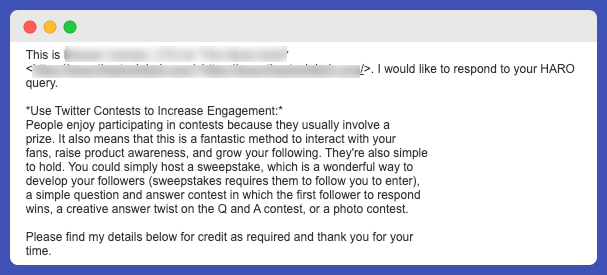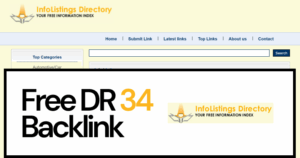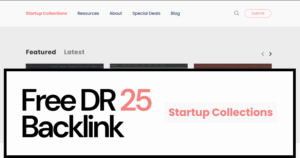Backlinks are crucial for SEO success, significantly boosting your website’s search rankings by acting as votes of credibility. High-quality backlinks from respected, authoritative sites are especially valuable, and having your target keyword in the anchor text amplifies the impact. Dofollow links are preferred, and it’s best if the linking website is topically relevant to yours. Furthermore, backlinks from various websites are more beneficial than multiple links from the same source. Effective strategies for building backlinks include creating valuable content, participating in link roundups, leveraging the Moving Man method, broken link building, guest posting, and more. Always prioritize quality over quantity to avoid spammy or low-quality links. Monitoring your backlink profile and focusing on diverse link-building techniques will help you achieve better SEO results.
1. Building Linkable Assets

Credits: searchenginejournal.com
Creating high-quality content is the cornerstone of building linkable assets. When your content is informative, engaging, and relevant, other websites are more likely to link back to it. This not only drives traffic to your site but also improves your site’s credibility and search engine rankings. For example, writing an in-depth guide or an illuminating blog post about a specific topic can be highly valuable.
Developing unique research reports is another effective strategy for building linkable assets. Original research is highly valuable because it provides new insights and data that others can reference. This could be a survey in your industry, a detailed case study, or any other type of primary research. When you share findings that haven’t been published before, your content becomes a go-to resource that others will want to link to.
Investing in interactive tools can significantly increase backlinks to your site. Tools like calculators, quizzes, or interactive infographics not only engage users but also provide value that people will want to share. For instance, an SEO audit tool can attract links from other websites that find it useful for their audience. Interactive elements make your website more appealing and increase the likelihood of earning backlinks naturally.
- Conduct deep research on the topic
- Use engaging headlines and subheadings
- Include keywords naturally
- Optimize formatting for readability
- Include visuals to support the content
- Provide actionable takeaways
- Creating high-quality content
2. Participating in Link Roundups
Link roundups are a great way to get backlinks and improve your website’s visibility. These are blog posts or articles that gather and share quality content from various sources, usually around a specific topic.
Start by identifying relevant link roundups in your industry or niche. Use search terms like ‘keyword + link roundup’ or ‘keyword + best articles’ to find them. Websites that regularly publish link roundups often have a pattern to their content, making it easier to anticipate future posts.
Reach out to roundup hosts with a polite and concise email. Introduce yourself, explain why your content would be valuable to their audience, and provide a link to your article. Be sure to personalize your email to show that you’ve done your research and genuinely believe your content is a good fit for their roundup.
When proposing your content, ensure it provides genuine value. High-quality, insightful content is more likely to be featured. For instance, if you run a food blog and find a weekly roundup about healthy recipes, submit your well-researched article on nutritious smoothie recipes. This will not only get you a backlink but also drive targeted traffic to your website.
3. Using the Moving Man Method
The Moving Man Method is an advanced yet easy-to-implement strategy for building backlinks. It involves finding outdated resources on other websites, contacting the site owners, and offering them a replacement link from your site.
To start, search for outdated resources related to your niche. These could be pages that have moved to a new URL, sites that have shut down, or content that is no longer relevant. Tools like Ahrefs’ Broken Link Checker or simply using a search engine can help you identify these outdated resources.
Once you’ve found these outdated resources, the next step is to contact the site owners. Draft a polite and concise email explaining that you’ve noticed they are linking to an outdated or broken resource. Provide specific details like the exact URL and the issue you identified. Let them know you have a relevant and up-to-date resource that could serve as a better alternative.
In your email, offer a replacement link that leads to your content. Ensure that your content is high-quality and highly relevant to increase the likelihood of the site owner accepting your suggestion. This not only helps them clean up their website but also provides you with a valuable backlink.
Example: Suppose you found a blog post about SEO tips that links to a resource on a website that no longer exists. You can contact the blog owner, mention the broken link, and suggest your SEO guide or article as a replacement. More often than not, site owners appreciate the heads-up and are willing to link to your up-to-date content.
4. Broken Link Building
Broken link building is a powerful method to get backlinks by identifying dead links on other websites and offering your content as a replacement. To start, you’ll need to find broken links on relevant websites in your niche. Use tools like Check My Links, Ahrefs, or Broken Link Checker to help you locate these links.
Once you’ve identified the broken links, the next step is to create high-quality content that matches or improves upon the original dead link. This could be a new blog post, a detailed guide, or any valuable resource that fills the gap left by the broken link.
After you’ve prepared your replacement content, reach out to the webmasters or site owners who have the broken links. Politely inform them about the dead link on their website and suggest your content as a substitute. Mention how your content will benefit their readers and maintain the quality of their site. A well-crafted email can go a long way in securing a new backlink.
5. Guest Posting

Credits: loganix.com
To get started with guest posting, the first step is to identify sites that accept guest posts. You can do this by searching for keywords related to your niche along with terms like ‘write for us,’ ‘submit a guest post,’ or ‘become a contributor.’ Make a list of potential sites that match your audience and industry.
Once you have compiled a list, the next step is to pitch relevant topics. Research what type of content performs well on those sites, and propose topics that align with their existing content but offer a fresh perspective. Ensure your pitch is concise and highlights the value your post will bring to their audience.
When writing your guest post, make sure to include backlinks naturally within the content. These links should point back to your website or relevant high-authority pages. Avoid overloading your post with links, as quality is more important than quantity. Aim for a few well-placed links that provide additional value to the reader.
6. Creating Infographics
Designing engaging infographics is a fantastic way to attract backlinks to your site. Start by choosing topics that are relevant to your audience and contain valuable information. Use colors and graphics to make your infographics visually appealing but avoid clutter. Tools like Canva or Piktochart can help you create professional-looking infographics easily.
Promoting your infographics is essential to gain visibility. Share them on social media channels, relevant forums, and content-sharing sites like Pinterest and Reddit. Reach out to bloggers and influencers in your industry and ask them to share your infographic with their followers. You can also submit your infographic to infographic submission sites like Visual.ly.
Offering embedding codes is an effective way to encourage other websites to share your infographics. By providing an HTML embed code, you make it easy for users to add your infographic to their websites. Ensure that the embed code includes a link back to your site. This not only gives users an easy way to share your content but also helps you gain backlinks.
7. Submitting Testimonials
Identify products or services that you have genuinely used and found beneficial. Whether it’s software, equipment, or educational courses, ensure that your experience is authentic. Authenticity will make your testimonial more convincing and likely to be accepted.
Submit detailed testimonials that clearly outline your experience. Describe how the product or service helped you, providing specific examples when possible. An example might be, ‘Using the XYZ software increased my project management efficiency by 20%.’ Detailed, sincere testimonials not only help potential customers but also strengthen your relationship with the company.
Include a link to your site within your testimonial. Politely request the company to include the link, for example, ‘Feel free to check out our website at www.yoursite.com for more insights.’ Most companies are open to this as it provides social proof for their product while benefiting you with a backlink. Remember, the more in-depth and valuable your testimonial, the higher the chances your link will be included.
8. Getting Blogger Reviews
One effective backlinking strategy is to get bloggers to review your product or service. Start by finding relevant bloggers within your industry or niche. Look for bloggers who have a substantial following and whose audience would benefit from your offering. Use tools like Google search, social media platforms, or blogging directories to identify these bloggers.
Once you have a list of potential bloggers, reach out to them with a personalized email. Introduce yourself and explain why you think a collaboration would be mutually beneficial. Be clear about your expectations and how the blogger will benefit from the partnership, whether it’s in terms of free products, exposure, or financial compensation.
Offering your products in exchange for an honest review is a common practice. Send the blogger a sample of your product and provide any necessary information or support they may need to create their review. Make sure to encourage them to include a link to your website in their review. This not only helps with backlinking but also adds credibility to your product in the eyes of potential customers.
9. Using HARO

Credits: prowly.com
Sign up for HARO, which stands for Help a Reporter Out. This platform connects journalists with sources. By joining, you can get opportunities to be mentioned in articles or other forms of media, providing an excellent backlinking chance.
Respond to relevant queries from journalists. HARO sends multiple emails daily, each containing a list of inquiries. Choose the questions that are most relevant to your expertise and respond promptly. Timeliness can often be a key factor in getting chosen.
Provide valuable information in your responses. When you reply to a query, ensure your information is useful and well-researched. Journalists look for knowledgeable sources who can offer accurate and insightful information. By doing so, you increase your chances of being featured, thus earning a quality backlink.
10. Analyzing Competitors’ Backlinks
One effective strategy to improve your link-building efforts is to analyze your competitors’ backlinks. To do this, you can leverage various SEO tools like Ahrefs, SEMrush, or Moz. These tools allow you to see where your competitors are getting their backlinks from, giving you insight into potential linking opportunities.
Once you’ve gathered the data, it’s important to identify high-quality links. Look for backlinks from reputable websites with high domain authority. These are the links that can significantly boost your SEO. Pay close attention to the context in which the link appears to ensure it’s relevant to your content.
After identifying valuable backlink sources, reach out to those sites. Craft a personalized outreach email highlighting why your content would be a good fit for their audience. Offer something valuable in return, such as sharing their content on your social media channels or writing a guest post. Building relationships is key to successful link building.
11. Focusing on Content Formats That Generate Links
Creating original research can significantly boost your backlinking efforts. People love to reference unique data, so generating reports, surveys, or case studies can attract many linkbacks. For example, if you conduct a survey on current marketing trends, other websites may cite your findings in their articles, linking back to your original study.
Developing visual content is another effective strategy. Infographics, videos, and detailed images are highly shareable and can easily attract backlinks. For example, a well-designed infographic explaining complex data simply and engagingly is more likely to be shared by other websites, driving more links to your site.
Writing comprehensive guides is one of the best ways to earn backlinks. Deep, well-researched guides that cover a topic thoroughly are invaluable resources that other content creators will want to link to. For instance, an in-depth guide on SEO techniques would be a valuable resource for anyone writing about digital marketing, encouraging them to link back to your content.
| Content Format | Description |
|---|---|
| Original Research | Conducting new and unique research to provide information that can’t be found elsewhere. |
| Visual Content | Creating images, videos, or infographics that attract links from other sites. |
| Comprehensive Guides | Writing detailed guides that serve as a valuable resource for readers. |
12. Leveraging Relationships
One of the most effective ways to boost your backlinking efforts is by collaborating with industry experts. By building relationships with influential figures in your field, you can exchange valuable insights and mutually benefit from enhanced content visibility. For example, consider reaching out to a well-known blogger in your niche and proposing a guest post swap. This way, you both gain exposure to each other’s audience, increasing the chances of getting quality backlinks.
Don’t shy away from asking for backlinks directly. If you have created high-quality content that you believe would be beneficial to others, approach industry peers and ask if they would consider linking to your article or resource. Be polite and provide a clear reason why your content would add value to their site. For instance, if you wrote an in-depth guide on a relevant topic, you might say, ‘I think this guide would be a great addition to your resources section and provide useful insights to your readers.’
Promoting each other’s content can also lead to valuable backlinks. By sharing, commenting on, and linking to each other’s work, you foster a cooperative environment that can result in higher engagement and more links. To implement this strategy, you could set up a group of trusted peers and commit to supporting each other’s posts and updates regularly. This reciprocal promotion not only helps in backlinking but also in building a strong online community.
13. Monitoring and Disavowing Low-Quality Links
Using Google Search Console is essential for monitoring your website’s backlinks. It allows you to see who links to your site and helps you identify any potentially harmful links. Harmful links can negatively affect your site’s ranking and reputation.
To identify harmful links, look for links from spammy websites or irrelevant content. These links often come from low-authority sites and can cause a drop in your search engine rankings. Tools like Google Search Console make it easier to spot these issues by providing a list of all the backlinks pointing to your site.
If you find harmful links, you can use Google’s Disavow Tool to ask Google not to consider these links when assessing your site. Create a text file listing the URLs or domains you want to disavow and upload it to the Disavow Tool through Google Search Console. This step ensures that low-quality links do not negatively impact your website’s SEO.
14. Widening Prospecting to Indirectly Related Verticals
To maximize your link building efforts, it’s important to consider niches that are not directly related to your industry but still offer relevant audiences. Start by identifying these related niches. For example, if you run a fitness blog, related niches could include nutrition, mental health, or lifestyle blogs. This widens your reach and brings in a variety of backlink opportunities.
Once you have identified these niches, reach out to their website owners or managers. Explain why a backlink from their site to yours would be beneficial for both parties. For instance, you can mention how your fitness tips align with their content on healthy living, providing their readers with more value.
Offering mutual benefits is key in securing backlinks from these indirectly related sites. You can propose guest posts, resource sharing, or content collaborations that serve both audiences. This creates a win-win situation where both parties gain traffic and improved SEO.
15. Avoiding Low-Quality or Spammy Backlinks
Understand the dangers: Low-quality or spammy backlinks can harm your website’s credibility and ranking on search engines. Search engines like Google can penalize sites associated with spammy links, leading to lower visibility and traffic. They may also decrease user trust in your site, affecting overall reputation.
Avoid Black-Hat Practices: Black-hat techniques, such as buying links or participating in link farms, can provide a quick boost but are risky and unsustainable. Such practices are against search engine guidelines and can result in penalties or even de-indexing of your site. Instead, aim for ethical and sustainable methods to build your backlink profile.
Focus on White-Hat Techniques: Embrace white-hat SEO strategies like guest blogging, creating high-quality content that attracts natural links, and building relationships with other reputable sites. For example, writing informative articles or how-to guides that industry influencers can share and link back to can significantly strengthen your backlink profile. Always prioritize quality over quantity in your link-building efforts.
Frequently Asked Questions
1. What is the importance of backlinking in SEO?
Backlinking helps search engines understand that your website is trustworthy and authoritative. High-quality backlinks can improve your site’s ranking on search engine results pages.
2. How can beginners find websites for backlinking?
Beginners can start by reaching out to blogs and websites in their niche, engaging in guest blogging, and using tools like Google Search to find backlink opportunities.
3. What types of backlinks should I avoid?
Avoid low-quality or spammy backlinks, like those from link farms or unrelated sites. These can harm your site’s reputation and ranking.
4. Is it better to have more backlinks or higher quality backlinks?
It’s better to have high-quality backlinks from reputable sources. Quantity is less important than the relevance and authority of the linking site.
5. How can social media help with backlinking?
Sharing your content on social media can attract attention and encourage others to link to your site. It’s a good way to build organic and natural backlinks.




